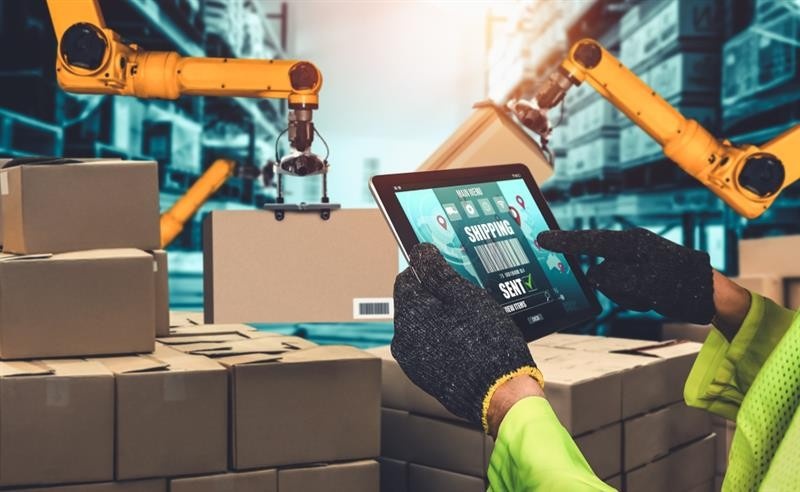How Custom Logistics Software Development Can Improve Real-Time Tracking
Custom logistics software development improves real-time tracking by providing solutions that fit perfectly with current systems, allowing for constant visibility and better decision-making. Unlike generic tracking tools, custom software combines GPS, IoT sensors, mobile apps, and predictive analytics to improve delivery accuracy, reduce costs, and elevate customer satisfaction. With phased implementation, robust API integration, and strong data security, businesses gain long-term scalability and a significant competitive advantage in the fast-evolving logistics landscape.
In today's interconnected global economy, supply chain problems happen all the time instead of just sometimes. Companies that use traditional logistics systems often don't know what's going on because they use old tracking methods that give them information hours or even days after events happen.
This lack of awareness has a cascade effect, causing shipments to be late, customers to be angry, costs to go up, and business relationships to be destroyed. The solution lies in custom logistics software development that puts real-time visibility at the center of operations.
Why standard tracking solutions don't work
Most logistics organizations start with ready-made tracking solutions that promise to give them a complete view. But these general systems typically make things worse instead of better. Standard solutions usually work in silos, meaning they don't work with current warehouse management systems or transportation platforms.
When shipping data is kept in more than one system with distinct formats and update schedules, the disconnect becomes clear. A package could show up as "in transit" in one system and "delivered" in another, which can be confusing for both customers and internal teams.
Custom logistics software development solutions get around these problems by making systems that work together and are made to fit the needs of each business. Custom development adjusts technology to complement current workflows instead of making business processes fit software limitations. It also adds the openness needed for good decision-making.
The Revolution in Real-Time Tracking
Real-time tracking changes logistics operations from putting out fires to managing things ahead of time. When done right, it gives you a clear view of every part of the supply chain at all times, from the amount of stock in warehouses to the exact location of delivery trucks.
The technology that makes real-time tracking possible has changed a lot over time. GPS technology can now pinpoint a location to within a few meters. IoT sensors can also keep an eye on temperature, humidity, and other environmental conditions that affect the quality of cargo.
But the actual strength of real-time tracking is not simply in gathering data, but also in combining and analyzing it. Custom logistics software solutions development makes systems that not only collect data from many sources but also turn it into useful information that helps people make better decisions.
The main parts of good real-time tracking systems
Companies can design systems that consistently and reliably track things if they know these key parts.
Combining GPS and Location Services
Modern GPS tracking systems depend on many different positioning technologies working together. GPS is the base, but cities need more than that, such cellular triangulation and Wi-Fi placement. Custom development makes sure that these technologies work together perfectly, giving you location updates all the time, no matter what the weather is like.
Advanced systems use position data, route plans, and traffic conditions to guess when people will arrive and find any delays before they affect customers.
Networks of IoT sensors
It is now necessary to use Internet of Things sensors to keep an eye on the status of goods while it is in transit. Temperature sensors keep pharmaceutical shipments safe, and shock monitors make sure that fragile devices get there without getting broken. These sensors send constant streams of data to central tracking systems.
With custom programming, businesses can choose the exact sensors they need for particular cargo kinds and add the data to their current workflows.
Creating mobile apps
Field teams need to be able to get information in real time even when they're not at their workstations. Custom mobile apps give truckers and delivery people quick access to tracking data. These apps let you talk to each other, which keeps central systems up to date on what's going on in the field.
The mobile part is very useful for proving that anything was delivered. Drivers can get signatures and images that are instantly sent to tracking systems and used to provide messages to customers.
Benefits of Custom Real-Time Tracking Solutions for Businesses: Better Customer Experience
No matter what they're buying or who is delivering it, today's shoppers expect to be able to see their packages like they do with Amazon. Real-time tracking addresses these needs by giving you accurate, up-to-date information about the status of your package and when it will arrive.
Improvements in operational efficiency
Logistics teams can keep improving their operations all the time thanks to real-time visibility. It is easier to plan routes when systems can take into consideration real-time traffic, driver availability, and delivery priority.
Makingway better decisions to save moneyRI
Visibility helps businesses do better financially in a number of ways. When route optimization takes real-time conditions into account, fuel costs go down. When scheduling gets better, labor costs go down as well.
Important Parts to Add to Custom Tracking Systems
When making custom tracking solutions, several characteristics are necessary to get the most out of real-time visibility.
Complete Reporting and Dashboard
Five Most Important Parts of a Dashboard:
-
Live Map View with Information on Multiple Layers: Interactive maps that refresh automatically show where vehicles are, how far they've come, and how long it will take to deliver. Add weather overlays, traffic conditions, and facility locations to give a full picture of how things are going.
-
Tracking Performance Metrics and KPIs: Keep an eye on delivery timings, fuel use, customer satisfaction scores, and other critical performance indicators in real time. Automated warnings let management know when measurements go above what is allowed.
-
Exception Management and Alert Systems: help you find and rank problems that need to be fixed right away. Alerts that are color-coded assist teams prioritize the most important issues.
-
Predictive Analytics and Trend Analysis: Use past data and present situations to predict possible problems and find ways to make things better with predictive analytics and trend analysis.
-
Integration Status and Data Flow Monitoring: Check the integration status and data flow to make sure that all parts of the system are working properly and that data is flowing as it should.
The ability to integrate APIs
For logistics to perform well today, many software systems need to work together. Custom development should include strong API features that make it easy to share data with current enterprise resource planning systems and customer relationship management platforms.
Automatic Notification Systems
When systems automate routine notifications, it becomes easier to talk to stakeholders. Customers get automatic updates on their shipments, and internal teams get notifications about problems that need to be fixed.
Best Practices for Putting Real-Time Tracking into Action
A organized strategy makes sure that solutions are successfully put into use and adopted in all areas of business.
Plan for a phased rollout:
The three most important steps for a successful implementation are:
-
The Foundation Phase (Months 1-2): Set up the basic tracking infrastructure with GPS integration and basic mobile features. Before fully deploying the system, test its performance on a small number of routes.
-
Improvement Phase (Months 3–4): Add IoT sensors, advanced analytics, and features that customers can see. Improve performance while adding more routes to the coverage area.
-
Optimization Phase (Months 5–6): Set up full automation, predictive analytics, and advanced reporting. This is when the whole system will be used in all processes.
Training staff and managing change
When people understand and accept the new systems, technology implementation works. Training programs should emphasize on how real-time tracking makes staff members' duties easier and more productive, rather than on technical details.
Data Security and Compliance
Logistics operations deal with private information on customers, suppliers, and business partners. Custom programming needs to include strong security mechanisms that protect data without slowing down or making the system harder to use.
Working with current logistics systems
Successful custom logistics software development projects know that new tracking features need to fit into the way things are already done. Companies have spent a lot of money on warehouse management systems and transportation management platforms that can't be replaced immediately.
Data compatibility and workflow continuity should be the main goals of the integration approach. API development is very important for smooth integration since it lets different systems share information automatically and cuts down on mistakes that happen when people enter data by hand.
How to Measure Success and ROI
The top four key performance indicators for keeping an eye on the success of a system are:
-
Delivery Time Accuracy: Find out what percentage of deliveries arrive on time as promised. Most of the time, real-time tracking systems that work well increase on-time delivery rates by 15% to 25%.
-
Customer Satisfaction Scores: Keep an eye on what customers say about how well they can see their shipments and how well you communicate with them. Usually, real-time tracking makes people happier.
-
Reducing Operational Costs: It means keeping an eye on changes in fuel use, overtime pay, and administrative costs. Tracking systems that work well can cut operational costs by 10 to 20%.
-
Exception Resolution Time: Find out how quickly teams find and fix problems with delivery. Real-time visibility usually cuts down on resolution times by 40 to 60%.
When figuring out the return on investment, you should look at both direct cost reductions and indirect benefits like keeping customers and getting a better position in the market. In competitive markets, many organizations find that the ability to track things in real time sets them apart from their competitors.
Making Sure Your Tracking Investment Lasts
Technology keeps getting better, therefore custom logistics software development solutions should be able to handle both present and future needs. Without having to completely rebuild, system architecture should be able to embrace new technologies like AI and bigger IoT ecosystems.
Going Ahead with Custom Development
The logistics business is still under pressure to be more open, efficient, and provide great customer service. By investing in the creation of specialized logistics software solutions, businesses may get ready to handle these problems and gain a competitive edge through better operational insight.
Whether you operate in retail, pharmaceutical, or freight transport, tailored logistics industry software can address unique tracking and integration challenges across sectors.
Real-time tracking changes logistics from a cost center that focuses on transporting products to a strategic tool that boosts customer satisfaction, operational efficiency, and business growth. Investing in unique real-time tracking features pays off by improving client interactions, making operations more efficient, and putting the company in a better position to compete.

Subscribe & get all related Blog notification.





Post your comment